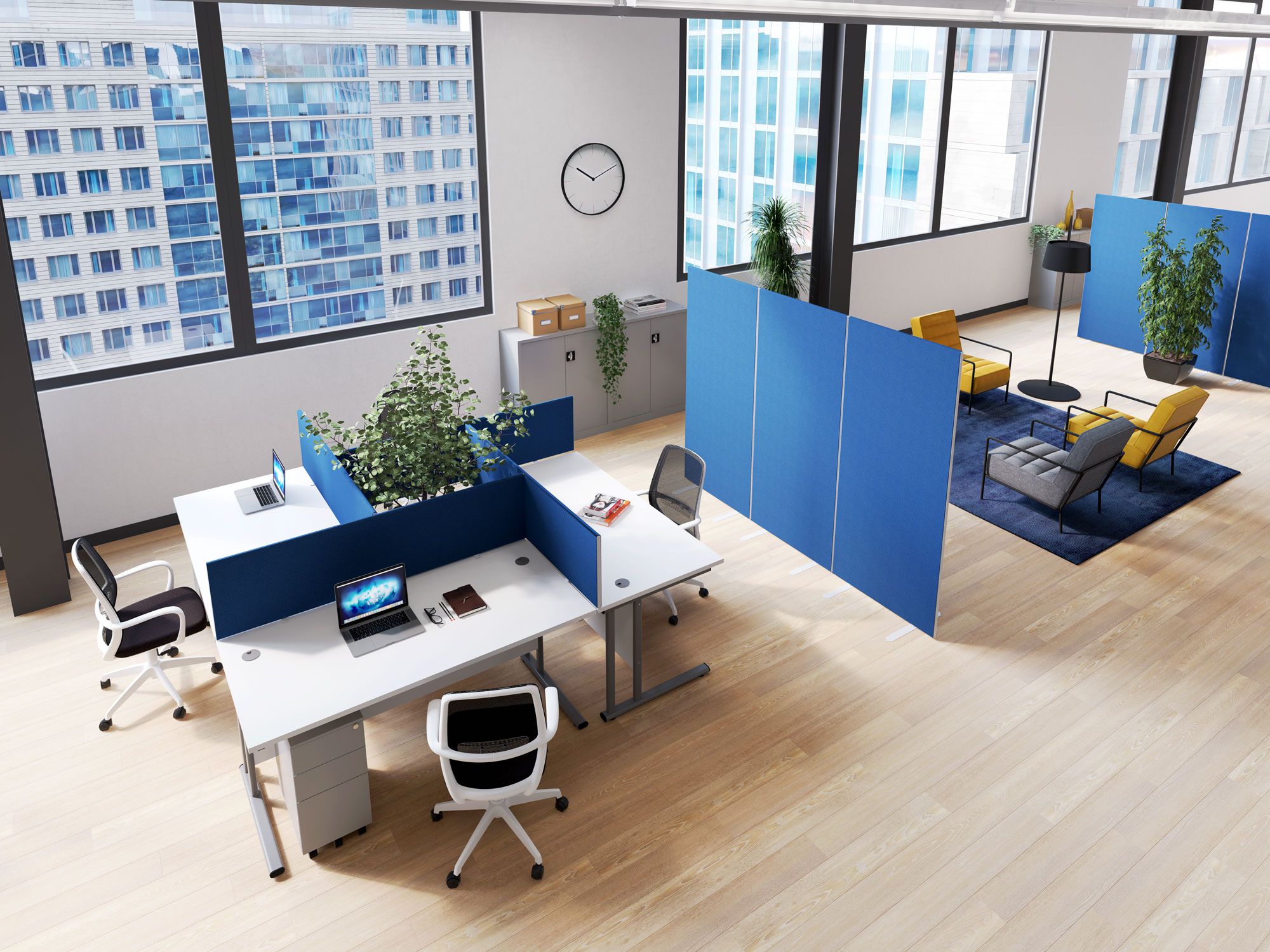Since the first lockdown in 2020, almost half of the UK’s workforce have been working from home. With a return to office spaces imminent, many businesses are starting to look at incorporating more flexible and adaptable work environments to improve both productivity and the well-being of their employees.
The workspaces of the future are going to look very different from the office setups we’ve all become accustomed to. With flexible working patterns becoming the norm, more businesses are looking to create hybrid working environments, providing an improved work-life balance for all employees, and allowing for staff numbers fluctuating from day to day.
TECHNOLOGY & WELL-BEING
Since
covid, many businesses and employees have heavily relied upon technology to be
able to keep moving and working, even in the toughest of circumstances. We’ve
become accustomed to conferencing and collaborating with others with the help
of technology.
Video
conferencing tools such as Zoom and Microsoft Teams have helped people to
connect and collaborate, still working as a part of a team, while confined to
their houses. As well as being able to keep businesses moving, video
conferencing offers businesses a way to connect socially, giving employees the
opportunity to reconnect.
Technology, along with video conferencing, offered businesses the ability to work at home with reliable broadband and secure VPNs to keep networks and online information private. Businesses are even able to give their employees laptops, computers, and phones, allowing for remote and flexible work environments. Portable technology is just one way in which, when businesses start to return to the office, life can be made easier for employees. Being able to work flexibly, whether that be remotely, or a hybrid of office and the home, improves the productivity of all employees.
Productivity, well-being, and mental health are at the epicentre of the businesses in the current climate. Creating ‘work to people’ working environments will help improve employees work-life balance, encourage flexible working, and reduce how many employees, once back in the office, work together in confined or busy spaces.


OFFICE DESIGN & ENVIRONMENT
Coming
together in the workplace to socialise and collaborate on projects will become
the greatest purpose that the return to the office can fulfil. Many employees can’t
wait to be able to reconnect within the office. Many businesses are striving to
balance the need for collaborative spaces with the newfound need for upgraded
safety measures.
Many workplaces will start to employ new safety measures, from one-way walk systems, protective screens, and better air filtration and ventilation. Many workspaces are also starting to look at hybrid spaces, employing the idea of breakout areas, open plan offices, and modular workspaces like pods and cells to create some distance between employees while still working within the office.
Some businesses are also looking into integrating biophilic designs into workspaces. Biophilic designs seek to unite our fundamental need to connect with nature in modern environments like offices and places of education. ‘Greening up’ your workspaces is a great way to create a relaxed, calm, and productive atmosphere. Having naturistic features like indoor plants can also reduce CO2 and stress levels.
We don’t really know for sure what the workplace, or even the world, will look like when we return to work as we know it. However, what we can be sure of, is that businesses are working hard to create productive, collaborative, and safe, working environments for all employees.

